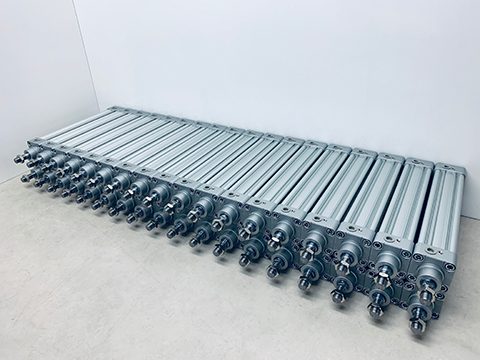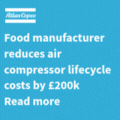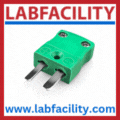
Posted to News on 11th Apr 2025, 09:20
How to maximise the performance of your pneumatic cylinder
Mike Bacon, internal technical applications engineer at Matara UK, shares expert insights on optimising pneumatic cylinder performance.

When designing linear motion systems, pneumatics offers a simple, flexible, and cost-effective solution. Furthermore, when you work with Matara, pneumatic systems can be fully specified to your needs, ensuring high durability and minimal maintenance. This results in systems that can operate for years without issue.
This reliability is one of the main reasons Matara's range of pneumatic components is widely used across industries such as food processing, automotive, woodworking and ceramics.
Pneumatic cylinders often serve as a key component in your pneumatic linear motion system. Therefore, it is crucial to consider multiple factors when specifying and installing your cylinder.
Correct cylinder selection
In traditional pneumatic cylinders (ISO VDMA type), a rod is used to push and pull the load from the piston. When selecting a standard cylinder, you must determine whether it needs to be single-acting or double-acting.
Single-acting cylinders are supplied with air on one side of the piston, requiring an internal spring return to bring the piston back to its original position. This often results in a less compact solution due to the space needed for the spring, as well as a more inconsistent output force due to spring resistance. As a result, double-acting cylinders are generally preferred.
Double-acting cylinders allow air to be supplied to both chambers of the cylinder. While this increases air consumption, it enables better control and higher cycle rates, making it the industry standard.
Compared to a traditional pneumatic cylinder, a rodless cylinder provides a more compact solution. Instead of using an extended rod, a rodless cylinder moves the load parallel to the piston. This allows for the same stroke length as a traditional cylinder but in a smaller space, while also eliminating the risk of rod buckling.
When selecting your cylinder, consider the environmental conditions it will be exposed to. Some key questions to ask include:
- Do you need specialised seals to accommodate high-temperature environments?
- Will the cylinder body be exposed to corrosive materials?
- Are there swarf or particles that could impede linear movement?
- Does your facility have adequate air pressure, or will you require pneumatic boosters or duplex cylinders?
Correct sizing
Once you have selected the appropriate cylinder type, the next step is ensuring it has the correct bore size and stroke length for your application.
Bore size: If a cylinder has a larger diameter than necessary, it will consume excessive air and increase cycle time. This leads to higher operational costs. However, a small safety margin is recommended to account for internal friction when managing the calculated moveable load.
Stroke length: Over-specifying the stroke length wastes energy and increases cycle time due to unnecessary travel distance and material weight. It may also create installation challenges due to space constraints.
Take care when installing
During installation, choosing the right mounting option is essential for maximising efficiency. If you need a quick and easy installation for a standard pneumatic cylinder, foot or flange mounts are often preferred. If the application involves a centred load, a trunnion or rear clevis mount helps to minimise side load stress.
If using a rear clevis mount on a horizontal installation, consider a centre trunnion positioned at the cylinder's balance point to counteract bending moments.
Additionally, consider the load movement, especially when using a long-stroke cylinder. An unsupported load can create instability, leading to rod buckling and system failure. To prevent this, use external guiding mechanisms such as linear rails, guides, or shafts. However, ensure that both the cylinder and the external guides are properly aligned to prevent jamming or malfunction.
Create an efficient air preparation system
Pneumatic circuits are sometimes designed without sufficient consideration for energy efficiency, leading to increased maintenance costs over time. Additionally, some mistakenly believe that increasing supply pressure improves cylinder performance when it wastes energy.
To build an efficient pneumatic system, consider the following:
Pressure sensors and regulators: Installing these close to the cylinder can help prevent air pressure issues and ensure optimal performance.
Electro-pneumatic components: These are increasingly available in the UK market and help enhance efficiency and accuracy.
Filtration and lubrication units: These improve air quality, reducing the risk of corrosion to cylinder seals. Poor air quality can cause system failures, leading to unexpected maintenance costs and production downtime.
Unit 5801 Shannon Way
Shannon Place
Tewkesbury Business Park
GL20 8SL
UNITED KINGDOM
+44(0) 1684 850000






